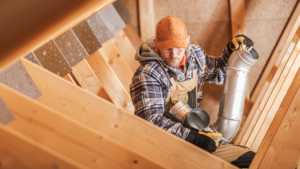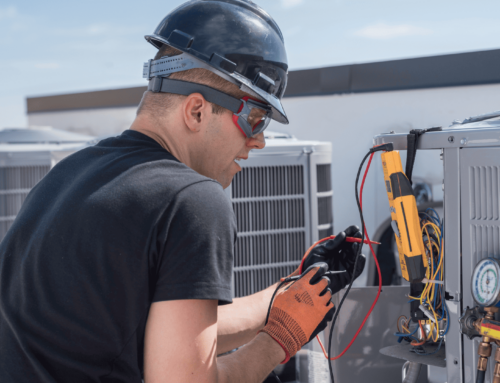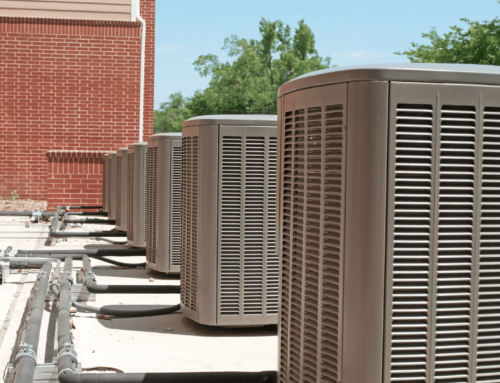
Thermostat Set Too High
To ensure sufficient airflow, attic thermostats should be set from 90-110°F. If your attic fan isn’t running, the simplest explanation is your attic isn’t hot enough to trigger it. Set it to the lowest recommended temperature and see if that fixes the problem.
No Power
In most cases, when your attic fan is not working, the problem is a lack of power. Though repairing it may be beyond your expertise, diagnosing it is relatively straightforward.
- Check the Circuit Breaker. If the fan tripped the circuit breaker, flipping it back will solve the problem. However, if it happens repeatedly, consult an electrician. Either the circuit is overloaded or the electrical wiring may need an upgrade.
- Faulty Wiring. Degraded wiring can’t carry electricity. Replacing it can be expensive, but checking it is cheap. If you’re comfortable working with electrical wires, buy a voltmeter and see whether the wires connected to the fan are still hot. If they’re dead, they need to be replaced. Always remember to wear rubber gloves and goggles for protection. They’ll insulate your hands and shield your eyes from sparks. If you’ve never worked with live wires before, contact an electrician to do it for you.
- Bad Thermostat. A defective thermostat can prevent electricity from powering your fan. While you can remove the casing and test the wires directly with a voltmeter, it’s easier to simply turn the fan on manually. If it runs, it means power is flowing into the thermostat, but not past it and it has to be replaced.
Bad Motor
If the fan hums but doesn’t move when you turn it on, it’s a sign of a busted motor. To determine what exactly has gone wrong, try pushing the fan blades. If they spin, the motor needs a new capacitor to store and distribute electricity. If they don’t, then either the winding (responsible for converting electrical energy into mechanical energy) has gone bad or the fan’s bearings have seized up.
Alternatively, the belt may be broken, sagging, or cracked. If you smell smoke coming from the motor, its internal circuits have shorted out. In some cases, it may be possible to restore the motor by replacing the damaged components. However, buying a new motor may be less costly than installing new parts.
No Air Flow
Fans can’t function without proper ventilation. If the airflow is sluggish, even though the fan’s running full blast, the exhaust vents are probably clogged. Climb onto the roof and clear away any debris. That should solve the problem.
Caught Blades
Cracked, loose, or bent blades can easily snag on the fan’s housing and grind it to a halt. Fan blades are durable, but can come loose after years of constant motion. Temperature fluctuations, which cause the metal to expand and contract, can lead to cracks.
Problems with fan mounting, or even an excessive buildup of dirt, can throw off the fan’s balance, causing the blades to catch and bend. There are no easy fixes for damaged blades. Though it’s possible to repair them, it’s not feasible in most instances. The only solution is to take out the old blades and put in new ones.
Protect Your Cooling System
Faulty attic fans put excess strain on your air conditioner, which is a costly repair to have to incur. However, despite the cost of a breakdown, most homeowners aren’t prepared when it happens. Without a home warranty, you could be stuck paying hundreds or even thousands of dollars out of pocket.
It’s important to regularly assess the functionality of household appliances and protect the systems you can. A HomesentialTM home warranty helps make sure you’re ready for a cooling system failure. We cover the critical parts of your air conditioner, including the compressor, motor, and thermostat. Our contractors don’t even charge service fees or deductibles. Their visit is covered by your monthly premium, which provides peace of mind at a minimal cost. Sign up today!






